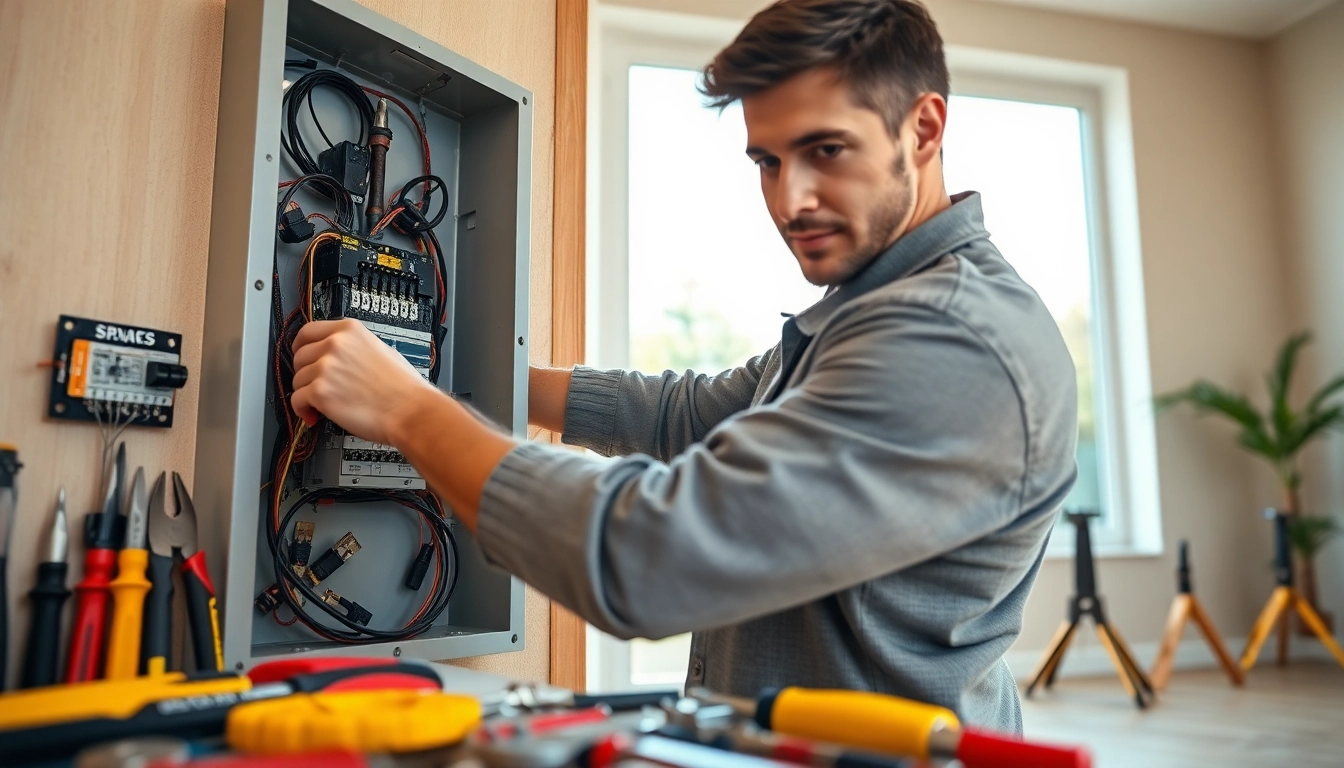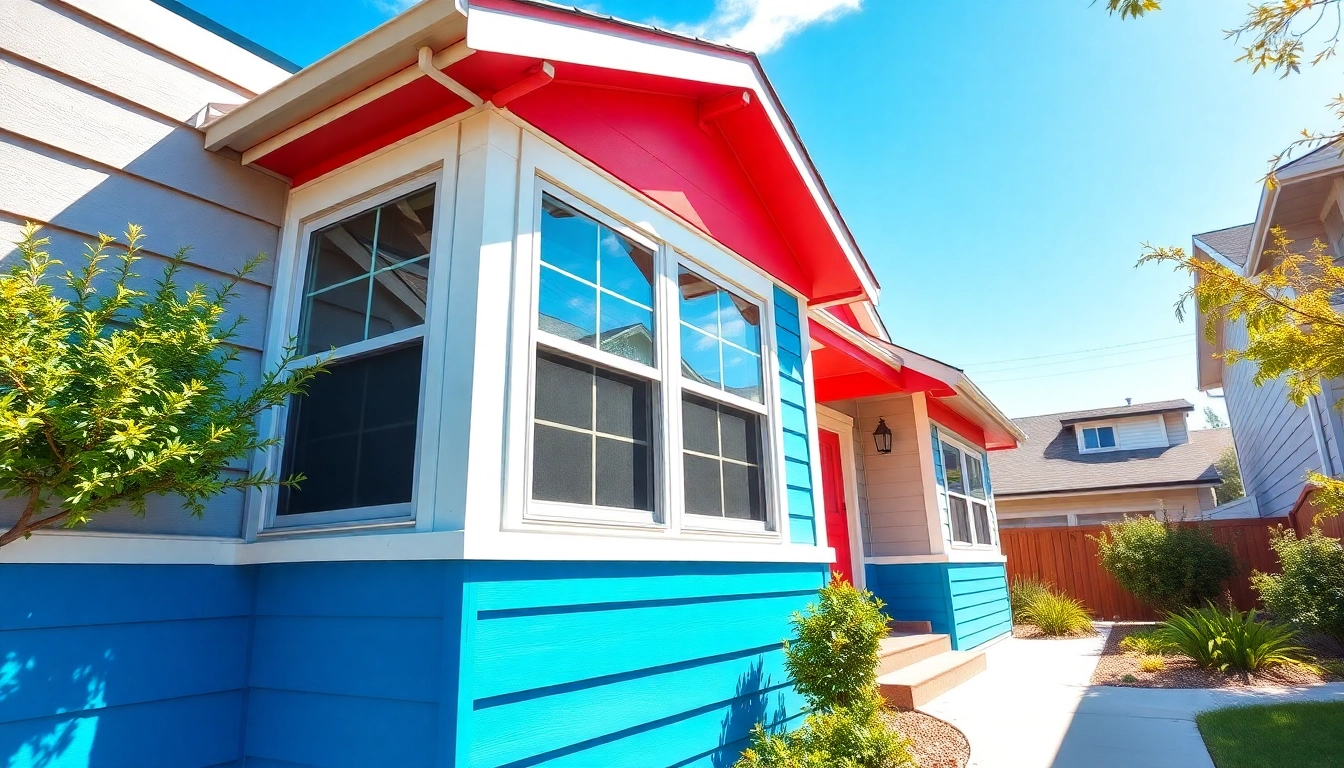What is an Electrical Panel Upgrade?
An Electrical Panel Upgrade involves replacing or upgrading the electric service panel in a home or building to improve the efficiency and safety of the electrical system. This component serves as the central hub for electrical distribution, directing electricity from the utility line to various circuits throughout the property. Understanding when and why to upgrade is crucial for maintaining a safe and efficient electrical system.
Definition and Purpose of Electrical Panel Upgrade
The electrical panel, sometimes referred to as the breaker box or service panel, is essential for distributing electrical power to different areas of a building. An upgrade might involve increasing the ampere rating, replacing outdated components, or enhancing safety features like ground fault circuit interrupters (GFCI). The primary purpose of an upgrade is to ensure that the panel can handle the electrical demand of modern appliances, electronics, and systems including heating, ventilation, air conditioning (HVAC), and electric vehicles (EVs).
Common Signs It’s Time for an Upgrade
Several indicators can suggest it’s time to consider an upgrade to your electrical panel:
- Frequent Tripping of Breakers: If circuit breakers are tripping frequently, it can indicate that the panel is overloaded or malfunctioning.
- Flickering Lights: Lights that flicker or dim when using high-power appliances might mean the panel cannot handle the load.
- Electrical Fires: Signs of burning or melting inside the panel are serious indicators that an upgrade is necessary for safety.
- Using Two-Prong Outlets: Homes using outdated two-prong outlets may need to upgrade their system to support three-prong or GFCI outlets.
- New Appliances: Installing high-demand appliances like electric ranges, water heaters, or EV chargers often necessitates an upgrade.
- Age of the Panel: An older panel, particularly those manufactured before the 1980s, may not meet current electrical codes or safety standards.
Benefits of an Electrical Panel Upgrade
Upgrading your electrical panel can provide multiple benefits, including:
- Increased Electrical Capacity: Higher amp panels allow for greater power distribution, supporting more circuits and devices.
- Enhanced Safety: Newer panels adhere to current safety codes, reducing the risks of fire hazards and electrical malfunctions.
- Improved Functionality: Modern panels often feature smart technology, enabling better monitoring and management of electricity usage.
- Higher Home Value: A newly upgraded electrical system can enhance your property value, appealing to potential buyers.
- Compliance with Regulations: Upgrading can ensure compliance with local building codes, avoiding potential fines or penalties.
Understanding Electrical Panel Components
Main Components of an Electrical Panel
An electrical panel comprises several key components:
- Main Breaker: The main breaker controls the electricity entering the panel and disconnects power when necessary.
- Branch Circuit Breakers: These protect individual circuits in the home. Each breaker trips to prevent overloads on specific circuits.
- Bus Bars: Conductors that distribute electrical power to different breakers, often located along the vertical sides of the panel.
- Grounding and Bonding Conductors: These components ensure safety by providing a path for electrical current to return to the ground in case of a fault.
How Electrical Panels Function
The electric service panel connects the main power line from the electrical grid to your home. Electricity flows into the panel, where the main breaker distributes it to different circuits through breakers. When a circuit becomes overloaded or shorted, the breaker trips, cutting off power to prevent overheating and potential fires. This function is essential for maintaining a safe electrical system.
Amperage Ratings Explained
Amperage ratings of electrical panels indicate the maximum amount of current the panel can handle. Common residential panels range from 100 to 200 amps. Upgrading from a 100-amp panel to a 200-amp panel is often advisable for homes with multiple high-demand appliances. Knowing the amperage rating is crucial for ensuring your electrical system can support current and future needs.
Factors Influencing Electrical Panel Upgrade Costs
Typical Cost Ranges for Electrical Panel Upgrade
Cost for upgrading an electrical panel varies widely depending on several factors, including location, the complexity of the job, and electrical codes.
On average, homeowners can expect to pay between $800 and $4,000 for an upgrade. This range considers labor, materials, and any necessary permits. The complexity of the upgrade, such as rewiring or relocating the panel, can significantly influence the overall cost.
Labor Costs and Professional Fees
Hiring a qualified electrician is crucial for safety and compliance. Labor costs generally range from $50 to $120 per hour, depending on the electrician’s experience and local market rates. In some areas, labor can represent a substantial portion of the overall upgrade cost, making it essential to get multiple quotes from licensed electricians.
Material Considerations and Price Variability
The cost of materials for an electrical panel upgrade can vary based on the type of panel used, circuit breakers required, and the need for additional components like grounding systems. Current prices for panels typically range from $100 to $500, while breakers can cost anywhere from $10 to $50 each. Additionally, any modifications or materials necessary for compliance with updated codes may add to your total expenses.
Step-by-Step Guide to Upgrading Your Electrical Panel
Preparing and Planning for the Upgrade
Before starting the upgrade process, it’s essential to assess your current electrical needs and future requirements. Take inventory of major appliances, electronics, and any upcoming installations like EV chargers. Determine if your existing panel can handle your electrical load and plan the upgrade accordingly. Creating a budget will help in managing costs effectively.
Permits and Codes for Electrical Panel Upgrade
Most areas require permits to upgrade an electrical panel to ensure compliance with local building and safety codes. Check with your local municipal or city offices to understand the specific requirements in your area. Responsibilities often include securing the necessary inspections for safety and compliance, which an experienced electrician can help facilitate.
Hiring a Qualified Electrician
Hiring a qualified, licensed electrician is vital for performing an electrical panel upgrade. Look for professionals with good reviews and a solid background in electrical work. Verify their licenses and ask for references. The right electrician will ensure the work is performed safely and up to code, ultimately saving you time and potential costs associated with poor workmanship.
Post-Upgrade Considerations and Maintenance
Testing and Setting Up After Electrical Panel Upgrade
Once the upgrade is completed, the electrician will conduct tests to ensure that the new panel functions correctly. This should include checking circuit breakers, verifying connections, and making sure grounding systems are effective. After testing, the electrician should provide guidance for operating the panel safely and answer any questions you may have about your upgraded system.
Routine Maintenance to Ensure Safety
Regular maintenance of your electrical panel is crucial for long-term safety and functionality. Inspect the panel periodically for signs of wear, such as rust, scorch marks, or sensitive smells. It is advisable to schedule routine inspections with a licensed electrician to keep the system in optimal condition.
Energy Efficiency Benefits Post-Upgrade
Upgrading your electrical panel can lead to significant energy efficiency improvements. Modern panels often facilitate better load balancing and can support energy-efficient appliances. This can lead to a lower energy bill and contribute to a more sustainable living environment. Moreover, an upgraded panel may enable homeowners to take advantage of energy-saving technologies and incentives, enhancing overall efficiency.



